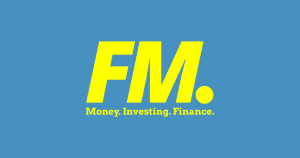Digital banking emerged as a part of global innovation in the FinTech industry.
Accelerated by the pandemic and empowered by the latest technological advancements, it has quickly entered people’s lives and aligned with the demands of businesses.
Statista predicts that the number of US citizens using digital banks will hit 216.8 million. Among the reasons why consumers turn to online banking are the ease of use, security, and extensive banking capabilities available within their favorite solutions.
The concept of digital banking admits easy and swift money management, performing fund transfers and online transactions, payments automation, and more. Modern banking solutions provide the ability to operate with digital currencies, introduce asset management, and provide comprehensive lending options.
The reasons for developing digital banking platforms are many. Let’s figure out what the process of financial mobile app development is like and how to start an online bank.
A quick overview of the digital banking market
The market for FinTech services is growing exponentially, and it’s projected that by the end of 2022, more than 65 percent of the US population will be banking online.
The target audience for digital banks
Taking into account their lifestyles and aspirations, Millenials and Gen Z representatives are considered to be the most active mobile banking users. At the same time, the share of online banking users aged 50+ has also grown in recent years.
While Millennials turn to online banking to make the most of online transactions, peer-to-peer transfers, and cashback, the representatives of older generations may benefit from obtaining information about bank products, receiving mobile payments, and tracking their balances online.
So, deciding on the audience to target with your banking product, you better take into account the needs of different age groups.
Popular online banking solutions
Some banks make digitalization a part of their transformation strategy and FinTech businesses provide digital banking without having any brick-and-mortar branches behind. The latter is often called neobanks or digital-only banks. To operate legally, they partner with bank license issuers and distribute virtual and physical cards just like traditional banks do.
Among the most popular banking solutions that provide digital services are:
- Chime is the US most popular neobank that allows its customers to open deposit and debit cards, view their credit history, easily withdraw cash, automate savings, and more.
- Wise is not purely a mobile bank, but a system offering electronic money accounts. It offers international and domestic money transfers, provides debit cards, and provides options to operate with different types of currencies.
- N26 is a German digital bank that evolved from a startup and is now functioning in more than 50 countries. For users, its capabilities include direct deposits, international fund transfers, and personal finance management.
- Monzo is a popular neobank from the UK. Their services include p2p transfers, splitting the bills, easy budget tracking, digital loans, and many more.
Each success story has a tedious formation process and hours of work behind it. Now, let’s figure out how to develop a digital bank.
How can you develop a digital bank?
Banking software development requires a deep knowledge of the market. This includes understanding the legal part, complying with the industry requirements, and bringing to the table hands-on technical knowledge.
Getting started with digital banking, make sure you’ve figured out the things to do first and have in place all the assets to get you covered.
Among the challenges you may face on this way are:
- Building product architecture requires involving a Business Analyst and a Solution Architect. Together with the stakeholders, they are to decide which of the architecture types (monolith, microservices, or layered) better aligns with the technical requirements and business goals.
- Choosing the right technology stack you need to mind the time to market, a long-term development strategy, and the risks to mitigate.
- Ensuring all-around security is a must for applications that deal with sensitive data. This means every Fintech solution is subject to introducing enhanced security measures like introducing secure authentication, developing dedicated encryption and data storage systems, and following KYC (Know Your Customer) principles.
- Achieving regulatory compliance means developing and following a set of principles related to risk mitigation, data reliability, and user data processing.
Clearly understanding your business goals, following the security best practices, and partnering with a reliable financial software development services provider are the key principles for creating a successful digital solution.
Must-have features of digital banking apps
Deciding on the features to add when you start a digital bank, it’s essential to understand the needs of your audience. Think of the ways to realize your ideas and evaluate the resources you can count on to implement the desired functionality.
Consider starting with the product MVP and then gradually rolling out additional features. This approach will help you meet the time and budget constraints and evaluate your success on the go.
Most mobile banking solutions are equipped with the following must-have features:
- Login and authorization
- Account management
- Transaction management
- Fund transfer
- Digital payments including P2P
- Notifications
- Support
With this basic functionality, your application can soon evolve into one of the custom banking solutions providing its users with:
- Expense tracking functionality
- Cashback system
- Digital loan capabilities
- Insurance options
- Tips on investment management
- Integration with digital wallet services and more.
How to monetize your digital banking app
So, how do you make money from developing a digital bank?
As a rule, FinTech solution providers get some profit from:
- money on cards, which is getting some share from customer deposits;
- transactions, meaning that a part of the interchange fee is split between the card network (Visa, Master Card) and the bank card issuer.
You may also consider offering a part of your banking functionality as a premium tier, adding some insurance options, increasing your product LTV by introducing BankID, and targeting your customers with PPC advertising.
Providing your customers with real value and adjusting your solution as their needs change with the product change is a winning strategy you should take with you when developing a digital bank.













